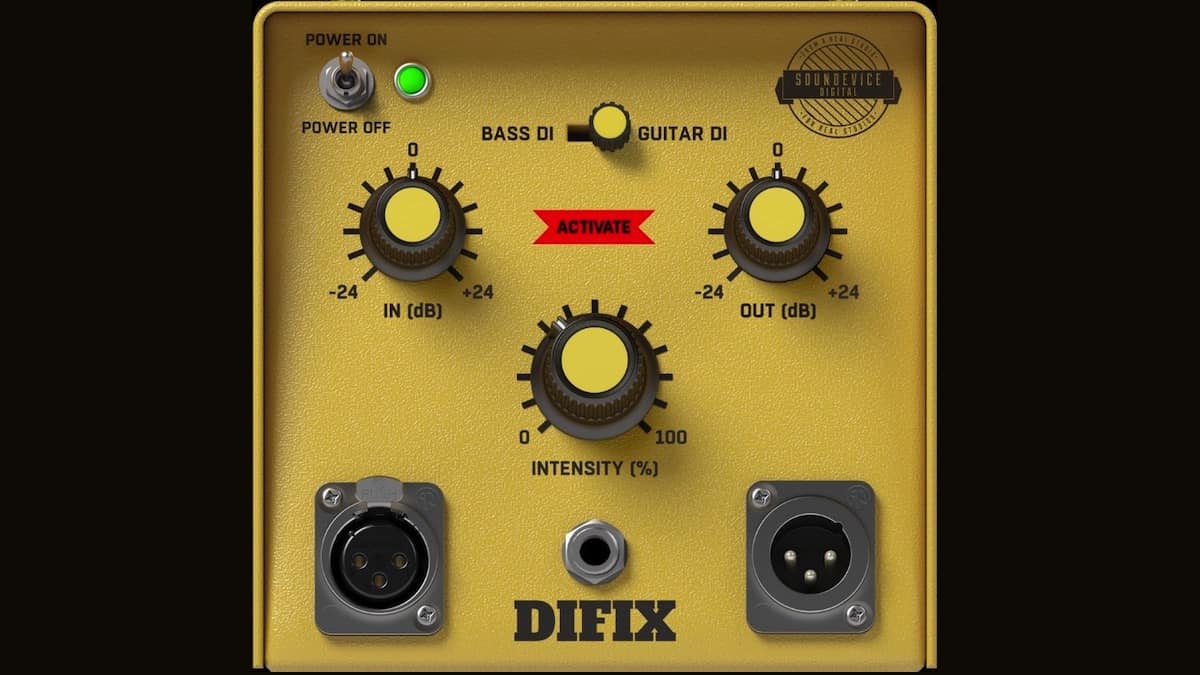Dynamics
Introducing SounDevice Digital’s DIFIX DI plug-in

DIFIX DI plug-in levels the sound and adds a little analog-style saturation to effectively work as a DI box-emulating plug-in.
By being born out of necessity in renowned recording studios such as Detroit’s Motown and United Sound Systems to accommodate amplifying emerging electric musical instruments — in particular electric guitars in the mid Sixties, the humble DI (Direct Input) box began by resolving a basic mismatch between electrodynamic guitar pickups and sensitive studio electronics. Even today, despite more modern DI boxes being far more sophisticated than those trailblazing ‘Motor City’ models, their primary function is still to take an unbalanced, high-impedance signal and convert it to a balanced, low-impedance signal, so running guitars or basses directly into mic preamps or sending signals over extended cable runs without losing volume and significant high-frequency information is possible.
Progress breeds change, clearly, yet even up-to-date DAW (Digital Audio Workstation) recording setups can sometimes suffer from imperfections arising from trying to directly record an electric guitar or bass by plugging it
SounDevice Digital’s DIFIX deploys several sophisticated independent processes to level the sound and add a little analogue-style saturation so as to effectively work as a DI-box-emulating plug-in. Put it this way: with all the science effectively hidden behind a readily resizable photorealistic GUI (Graphical User Interface) that is as easy on the eye as it is easy to use, ultimately using it is hardly rocket science. Switch between BASS DI or GUITAR DI to change the internal algorithms to best fit the incoming signal when recording bass or guitar, with the former improving missing bass guitar frequencies while the latter is tuned to be used with electric or electro-acoustic guitar, then decide how much DIFIX should improve the signal using some simple self-explanatory controls — namely, INTENSITY (%), which blends the dry and wet signals (with the maximum — 100 — setting allowing only the processed signal to go to the output, while lower values add the original untreated signal to the blend); IN (dB) is basically a gain input (controlling how much signal is being fed into the DIFIX plug-in and how its processing will react, ranging from -24 to +24 decibels); and OUT (dB) boosts the output signal (by between -24 to +24 decibels).
SounDevice Digital’s DIFIX is available to purchase for a time-limited introductory promo price of €19.00 EUR until January 3, 2021 — rising thereafter to its regular price of €49.00 EUR — as an AAX-, AU-, VST-, and VST3-compatible audio plug-in directly from United Plugins here: https://unitedplugins.com/DIFIX/ (A 15-day, fully-functional trial version for macOS and Windows can be downloaded for free from here: https://unitedplugins.com/download/)















